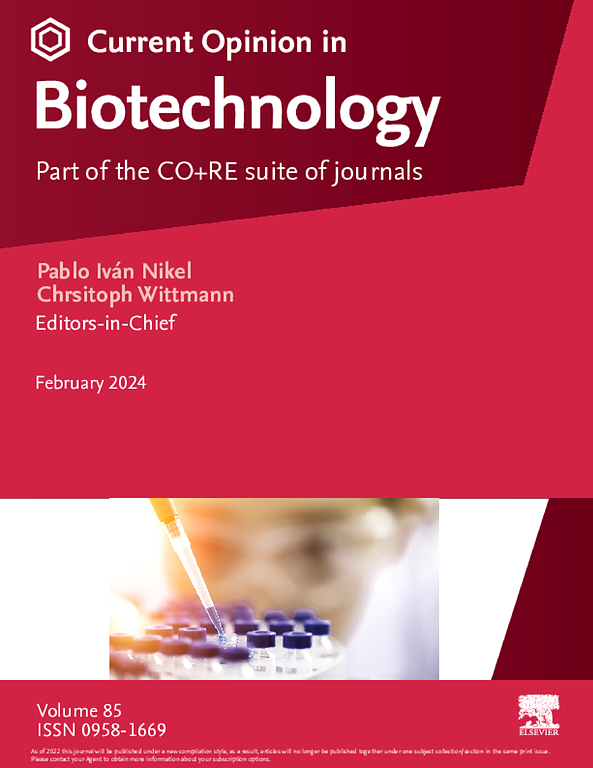Harnessing the potential of microbial methane utilization for chasing sustainability
IF 7
2区 工程技术
Q1 BIOCHEMICAL RESEARCH METHODS
引用次数: 0
Abstract
Microbial methane utilization (known as methanotrophy) serves as a gatekeeper of methane emissions in numerous ecosystems. Methanotrophy became a platform for the production of biofuels, value-added chemicals, and novel molecules from natural or renewable gas. Methanotroph- driven Methanotroph-driven processes enable novel solutions for bioremediation, biomining of minerals, methane mitigation, and agriculture. All applications rely on in-depth understanding of methanotroph biochemistry, genetics, physiology, and ecological fitness.
Here, we review recent advances in the enzymology of methane utilization and methanotroph carbon assimilation pathways as well as progress toward engineering both native and synthetic methanotrophs. New bioreactor approaches to overcoming methane and oxygen mass transfer limitations are also described. Continued research in these areas is critical to future success in methanotroph optimization for industrial processes.
利用微生物利用甲烷的潜力来追求可持续性
微生物甲烷利用(被称为甲烷氧化)在许多生态系统中扮演着甲烷排放的守门人的角色。甲烷化成为从天然或可再生气体中生产生物燃料、增值化学品和新分子的平台。甲烷氧化菌驱动的过程为生物修复、矿物生物矿化、甲烷减排和农业提供了新的解决方案。所有的应用都依赖于对甲烷营养菌生物化学、遗传学、生理学和生态适应性的深入理解。在此,我们综述了甲烷利用和甲烷氧化菌碳同化途径的酶学研究的最新进展,以及天然和合成甲烷氧化菌的工程进展。新的生物反应器方法克服甲烷和氧的传质限制也进行了描述。在这些领域的持续研究对于工业过程中甲烷化菌优化的未来成功至关重要。
本文章由计算机程序翻译,如有差异,请以英文原文为准。
求助全文
约1分钟内获得全文
求助全文
来源期刊

Current opinion in biotechnology
工程技术-生化研究方法
CiteScore
16.20
自引率
2.60%
发文量
226
审稿时长
4-8 weeks
期刊介绍:
Current Opinion in Biotechnology (COBIOT) is renowned for publishing authoritative, comprehensive, and systematic reviews. By offering clear and readable syntheses of current advances in biotechnology, COBIOT assists specialists in staying updated on the latest developments in the field. Expert authors annotate the most noteworthy papers from the vast array of information available today, providing readers with valuable insights and saving them time.
As part of the Current Opinion and Research (CO+RE) suite of journals, COBIOT is accompanied by the open-access primary research journal, Current Research in Biotechnology (CRBIOT). Leveraging the editorial excellence, high impact, and global reach of the Current Opinion legacy, CO+RE journals ensure they are widely read resources integral to scientists' workflows.
COBIOT is organized into themed sections, each reviewed once a year. These themes cover various areas of biotechnology, including analytical biotechnology, plant biotechnology, food biotechnology, energy biotechnology, environmental biotechnology, systems biology, nanobiotechnology, tissue, cell, and pathway engineering, chemical biotechnology, and pharmaceutical biotechnology.
 求助内容:
求助内容: 应助结果提醒方式:
应助结果提醒方式:


